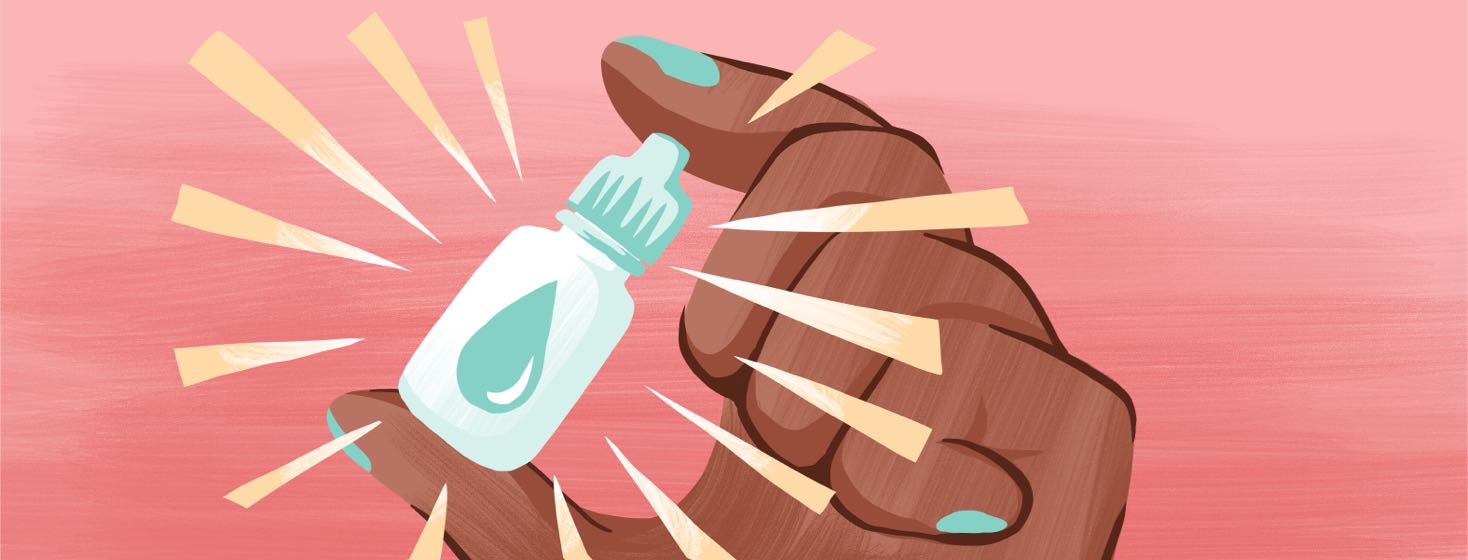Finding the Right Artificial Tears for My Dry Eyes
When I first saw my eye doctor for my dry eyes, I had been using an inexpensive multi-dose bottle of artificial tears. He recommended using preservative-free tears. I didn’t even know what that was at the time. Soon I found out that multi-dose bottles have preservatives in them to keep bacteria from growing. The problem is that these preservatives can be irritating to the eyes, especially if used often.
“How am I supposed to know if they contain preservatives or not?” I asked him. He replied that the drops would be labeled as preservative free and that they usually come in a box and contain small, individual vials.
Starting my search
So I left that day and began my hunt. The Walmart shelves contained so many options that I didn’t know which one to choose. I don’t remember which drop I tried first, but I do remember that finding the one that was most comfortable to my eyes was a process.
I tried preservative-free tears made by Systane, TheraTears, Similasan, and Refresh. I also scoured online message boards to see what everyone else was using. Preference seemed to be individual. I found that the Refresh brand was most comfortable for me, but they were just a temporary fix. I was applying drops every hour at least.
Trying to find something easier to use
Using the little individual vials was somewhat inconvenient as well. I would carry them with me in my purse and administer them throughout the day. The vials can be recapped, and they contain too much to use at one use. So I would reuse them. The problem would be when I would lose one in the bottom of my purse. Then, I would not know how long it had been there. I would end up throwing it out because I didn’t want to use it after about a day, as it didn’t have preservatives in it to keep bacteria from growing.
I eventually found a few people online who recommended Hycosan Extra, so I ordered it from Amazon (I have not been able to find it in stores). I like it because it is preservative free, but it comes in a pump bottle so that it only exposes and releases a single use of the drop at a time. A bottle is more convenient to carry with me, and I don’t have little vials all over my nightstand at home either. It also feels more viscous and long lasting.
Eye drops alone are not a fix
Along the way I have tried gels as well, including a gel containing Manuka honey and made by Optimel. I use this at night. The other gels that I tried didn’t feel comfortable to me. I have also used serum tears. In addition, I have used Xiidra, but more recently my doctor changed me to Cequa. I am doing other treatments as well that have helped me, including intense pulsed light for meibomian gland dysfunction. I say all this to make the point that eyedrops alone have not been a fix for me.
In one of my visits with my dry eye specialist, I told him that I was still applying drops often (almost every hour) by the end of the day. He was concerned about this; he said that drops change the ocular microbiome and that our natural tears are best. “But what if we don’t produce enough natural tears?” I wondered.
He asked what I was currently using. I showed him my bottle of Hycosan Extra, and he looked up the ingredients online. He mentioned that it contains hyaluronic acid, which is a natural substance found in the eye. However, he was still concerned that it was washing away my natural tears, so he recommended Optimel Manuka Honey drops in between my doses of Cequa. He said that they would coat the eye and be longer-lasting. I took some home with me that day.
Doing my own research
When I got home, I did some research about the microbiome of the eye and the use of drops with hyaluronic acid. I found a study report that discussed how the surface of the eye has a diversity of bacterial microbiota. The study examined if the use of drops with hyaluronic acid (both with and without preservatives, namely benzalkonium chloride) changed the ocular surface. The study found that "the use of sodium hyaluronate eye drops, whether containing BAC or not, changed the ocular surface bacterial microbiota."1
At our visit, my doctor seemed to feel that this change was negative. I read a little more into the study to see if it would shed some insight as to whether this change was positive or negative. To me, it seemed somewhat unclear.
Seeing what works
In the meantime, I began using the Optimel Manuka honey drops. They do sting at first when I administer them, but I am used to that feeling because I have been using the Manuka honey gel at night. They do seem to be longer-lasting, and I am using less drops than I was previously, as of my writing this.
I am concerned, though, because these do contain a small amount of the preservative benzalkonium chloride (BAC). They contain a lesser amount, though, because Manuka honey itself has antimicrobial properties. However, this still concerns me. Therefore, I have been using a combination of these and the Hycosan Extra drops.
What type of artificial tears have been most helpful to you?

Join the conversation